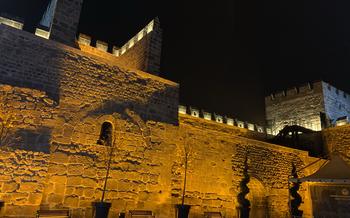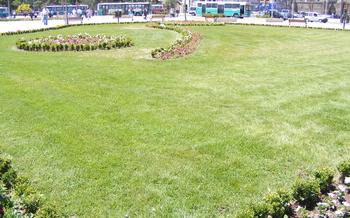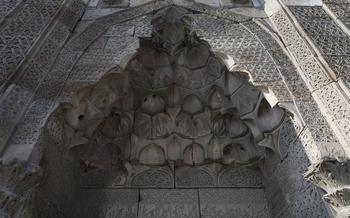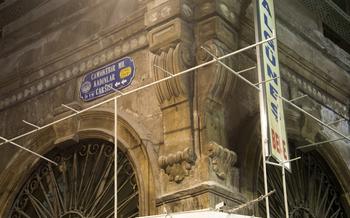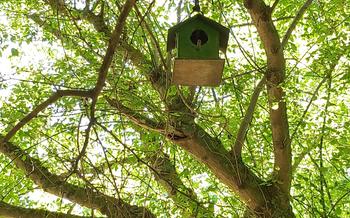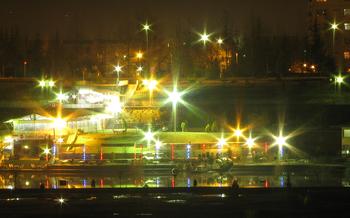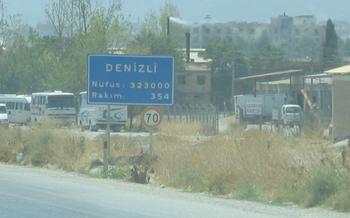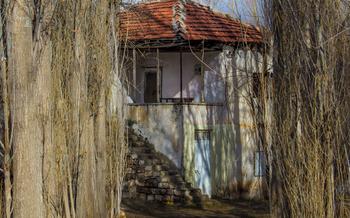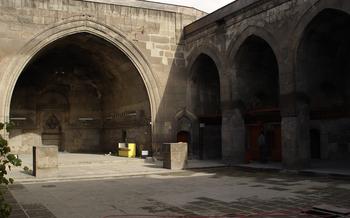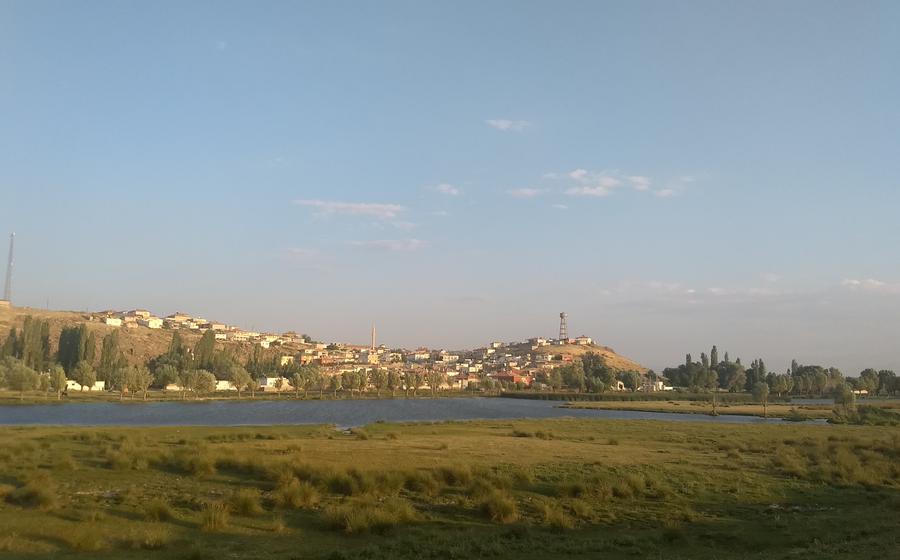
Sultan Sazlığı National Park Wild Life Area
- Sultan Sazlığı National Park Wild Life Area: A Birdwatcher's Paradise
- Planning Your Visit: Essential Tips
- Exploring the Park's Diverse Habitats
- Spotting Iconic Bird Species
- Greater Flamingo
- Dalmatian Pelican
- Pygmy Cormorant
- Glossy Ibis
- Birdwatching Hotspots Within the Park
- Photography Tips for Capturing Wildlife Moments
- Wildlife Beyond Birds: Mammals, Reptiles, and Amphibians
- Educational Programs and Visitor Center
- Accommodation and Dining Options
- Sustainable Tourism Practices: Minimizing Your Impact
- Safety Precautions and First Aid
- Exploring Nearby Attractions
- Cultural Experiences and Local Cuisine
- Volunteering and Conservation Opportunities
Sultan Sazlığı National Park Wild Life Area: A Birdwatcher's Paradise
Nestled in the heart of Turkey's Anatolian region, Sultan Sazlığı National Park Wild Life Area stands as a haven for birdwatchers, nature enthusiasts, and conservationists alike. This vast, ecologically rich expanse encompasses an impressive 21,450 hectares of diverse habitats, ranging from shimmering wetlands to lush grasslands, tranquil forests, and meandering rivers. Established in 2006, the park holds the distinction of being Turkey's largest national park.
The unique confluence of diverse habitats within the park has fostered an extraordinary level of biodiversity, with over 355 bird species recorded within its boundaries. This includes numerous globally threatened and near-threatened species, making the park a crucial haven for avian conservation. The park's wetlands, in particular, serve as a vital breeding ground and stopover site for migratory birds, including the graceful greater flamingo, the elegant Dalmatian pelican, and the diminutive pygmy cormorant.
Sultan Sazlığı National Park is not just a haven for birds; it also supports a rich diversity of other wildlife, including mammals, reptiles, and amphibians. Visitors may encounter the elusive Anatolian leopard, the majestic red deer, and the agile otters frolicking in the park's diverse ecosystems. With its exceptional biodiversity, stunning landscapes, and commitment to conservation, Sultan Sazlığı National Park stands as a testament to Turkey's dedication to preserving its natural heritage.
Planning Your Visit: Essential Tips
To make the most of your birding experience at Sultan Sazlığı National Park, careful planning is essential. The best time to visit is during the spring and fall migrations, when the park is teeming with diverse bird species. During these seasons, you'll have the chance to witness spectacular flocks of birds taking flight and filling the skies with their vibrant colors and melodious calls.
Before your visit, check the park's website or contact the visitor center to inquire about any necessary permits or entrance fees. Guided tours are available for those who prefer a more informative and structured experience, allowing you to learn more about the park's history, habitats, and birdlife. Booking a guided tour in advance is recommended, especially during peak seasons.
Pack essential items such as binoculars, a camera with a telephoto lens, and comfortable walking shoes. A field guide or birdwatching app can also be helpful for identifying the various bird species you encounter.
To avoid disturbing the wildlife, remember to follow the park's regulations and guidelines, such as staying on designated trails and refraining from making loud noises. Respecting the park's ecosystem and wildlife is crucial for ensuring a sustainable and enjoyable experience for all visitors.
Exploring the Park's Diverse Habitats
Sultan Sazlığı National Park is renowned for its diverse habitats, each supporting a unique array of bird species.
Wetlands: The park's wetlands are a haven for waterfowl and other waterbirds. The shallow waters, marshes, and reedbeds provide ideal feeding and breeding grounds for species such as the greater flamingo, Dalmatian pelican, and pygmy cormorant. These areas are also important for migratory birds that stop over to rest and refuel during their long journeys.
Grasslands: The park's grasslands offer a different set of habitats for birds. These areas are home to species such as the steppe eagle, Montagu's harrier, and the lesser kestrel. The grasslands are also important for ground-nesting birds such as the black-bellied sandgrouse and the stone-curlew.
Forests: The park's forests provide a sanctuary for a variety of woodland birds. These areas are home to species such as the eastern imperial eagle, the booted eagle, and the lesser spotted woodpecker. The forests also provide important roosting and nesting sites for migratory birds.
Lakes and Rivers: The park's lakes and rivers are important habitats for waterfowl and other waterbirds. These areas are home to species such as the great white pelican, the Eurasian spoonbill, and the black-necked grebe. The lakes and rivers are also important for migratory birds that stop over to rest and feed during their long journeys.
Spotting Iconic Bird Species
The Sultan Sazlığı National Park Wild Life Area is home to a diverse array of bird species, including several iconic species that attract birdwatchers from around the world.
Greater Flamingo
The greater flamingo is perhaps the most iconic bird species associated with the park. These elegant birds, with their long legs and pink plumage, are a symbol of the wetlands and can be seen in large flocks feeding and breeding in the shallow waters.
Dalmatian Pelican
Another iconic species is the Dalmatian pelican, the largest pelican in the world. These massive birds, with their long beaks and wingspans of up to 11 feet, can be spotted soaring over the wetlands or perched on sandbars, watching for fish to prey upon.
Pygmy Cormorant
The pygmy cormorant is a smaller species of cormorant, but no less fascinating. These birds, with their black plumage and yellow eyes, are often seen diving underwater to catch fish, using their webbed feet to propel themselves through the water.
Glossy Ibis
The glossy ibis is a striking bird with its iridescent plumage and long, curved bill. These birds are commonly seen wading in the shallow waters of the wetlands, searching for insects and other small invertebrates to eat.
Birdwatching Hotspots Within the Park
Sultan Sazlığı National Park offers a variety of birdwatching hotspots that cater to different interests and preferences. For a panoramic view of the park's diverse habitats, head to one of the several birdwatching towers strategically positioned throughout the park. These towers provide elevated vantage points, allowing you to scan the wetlands, grasslands, and forests for distant bird species.
Observation hides offer a more intimate and immersive birdwatching experience. These well-camouflaged shelters allow you to get up close and personal with birds without disturbing them. Several hides are located in prime birding areas, such as near nesting sites or feeding grounds. Be patient and silent while inside the hides, as sudden movements or noises can spook the birds away.
For those who prefer to explore the park's diverse habitats on foot, there are several walking trails that offer excellent birdwatching opportunities. These trails wind through different ecosystems, allowing you to encounter a variety of bird species. Keep an eye out for shy and elusive birds that may be harder to spot from a distance.
Boating excursions on the park's lakes and rivers offer a unique perspective for birdwatching. Glide along the tranquil waters and observe waterfowl, such as ducks, geese, and herons, in their natural habitat. You may also encounter kingfishers, dippers, and other water-loving birds along the way. Remember to bring your binoculars and a camera to capture these special moments.
Photography Tips for Capturing Wildlife Moments
Capturing stunning wildlife photographs in Sultan Sazlığı National Park requires careful preparation and understanding of your camera's capabilities. Here are some essential tips to help you make the most of your wildlife photography experience:
- Camera Settings:
- Choose a fast shutter speed (1/1000th of a second or faster) to freeze the motion of birds in flight or other fast-moving wildlife.
- Set your ISO to a low value (100-200) to minimize noise and maintain image quality, especially in low-light conditions.
-
Use a narrow aperture (f/8 or higher) to achieve a sharp depth of field and ensure that your subject is in focus.
-
Lenses:
- Telephoto lenses (300mm or longer) are ideal for capturing close-up shots of wildlife from a distance, without disturbing them.
-
A wide-angle lens (18-24mm) can be useful for capturing landscapes and including more of the environment in your shots.
-
Composition and Lighting:
- Pay attention to the background of your shots and avoid elements that may distract from your subject.
- Position yourself so that the light is behind you or to the side, to create a natural spotlight effect on your subject.
-
Use natural light whenever possible, as it provides the most flattering and realistic colors.
-
Patience and Timing:
- Wildlife photography requires patience and the ability to wait for the perfect moment. Be prepared to spend long periods observing and waiting for your subject to appear or behave in a way that allows you to capture a great shot.
- Anticipate the movements and behaviors of your subject, and be ready to adjust your settings and composition quickly to capture the decisive moment.
Wildlife Beyond Birds: Mammals, Reptiles, and Amphibians
While birdlife is the main attraction of Sultan Sazlığı National Park, the park is also home to a diverse array of other wildlife. Mammals that can be spotted include wolves, jackals, foxes, hares, and various species of rodents. Reptiles include tortoises, lizards, and snakes, while amphibians include frogs, toads, and newts.
One of the most fascinating mammals in the park is the Anatolian leopard, a critically endangered species that is found nowhere else in the world. These elusive cats are nocturnal and shy, but with a bit of luck, you may be able to spot one on a night safari.
The park is also home to a variety of reptiles, including the Caspian whipsnake, the largest snake in Turkey. This non-venomous snake can grow up to 5 meters in length and is often seen basking in the sun on rocks or tree branches.
Amphibians are well-represented in the park, with species such as the green toad, the marsh frog, and the fire-bellied toad. These amphibians play an important role in the park's ecosystem, as they feed on insects and other small invertebrates.
Educational Programs and Visitor Center
In addition to its stunning natural beauty and rich biodiversity, Sultan Sazlığı National Park offers a variety of educational programs and facilities for visitors to learn more about the park's ecosystem and conservation efforts.
At the park's visitor center, visitors can find interactive exhibits, information panels, and knowledgeable staff who can provide guidance and answer questions. The visitor center also offers a range of educational programs, including guided walks, workshops, and presentations on various aspects of the park's ecology and conservation.
Guided walks, led by experienced naturalists, are an excellent way to explore the park's diverse habitats and learn about the species that inhabit them. These walks are offered on a regular basis and cover a variety of topics, such as birdwatching, botany, and wildlife photography.
Educational workshops and presentations are also offered throughout the year, providing visitors with an opportunity to delve deeper into specific topics related to the park's conservation and management. These programs are typically led by experts in the field and offer a unique chance to learn from leading researchers and conservationists.
By participating in these educational programs, visitors can gain a deeper understanding of the importance of Sultan Sazlığı National Park and the ongoing efforts to protect its unique biodiversity.
Accommodation and Dining Options
Accommodation
Kayseri, the provincial capital, offers a range of accommodation options to suit different budgets and preferences. From budget-friendly hostels and guesthouses to comfortable hotels and luxurious resorts, there is something for every traveler. Several hotels are located within easy reach of the park, providing convenient access for nature enthusiasts.
Restaurants
Several restaurants and cafes are scattered around the park and in nearby towns and villages. These eateries offer a variety of dining options, from traditional Turkish cuisine to international fare. Visitors can indulge in delicious local dishes, such as Kayseri mantısı (Turkish ravioli) or sütlaç (rice pudding), while enjoying the scenic views of the park.
Picnic Areas
For those who prefer a more rustic dining experience, the park provides designated picnic areas equipped with tables, benches, and barbecue grills. These areas are perfect for families and groups to enjoy a leisurely picnic surrounded by the park's natural beauty. Visitors are advised to bring their own food and drinks, as there are no shops or restaurants within the park.
Sustainable Tourism Practices: Minimizing Your Impact
As a responsible traveler, it is essential to minimize your impact on the environment and support the sustainable development of the region. Here are some practices to follow:
-
Responsible birdwatching: Avoid loud noises, sudden movements, or using flash photography, which can disturb birds. Stay on designated trails and avoid entering sensitive areas during nesting or breeding seasons.
-
Leave no trace: Pack out all your trash and avoid leaving any food scraps or other items that could attract predators or harm wildlife.
-
Supporting local communities: Purchase souvenirs and handicrafts from local artisans and support local businesses, such as restaurants and guesthouses, to contribute to the local economy.
By following these practices, you can help protect the park's biodiversity and ensure that future generations can enjoy this unique natural treasure.
Safety Precautions and First Aid
Sultan Sazlığı National Park is generally a safe place to visit, but it's always important to take precautions to ensure your safety and well-being. Here are some safety tips to keep in mind:
- Follow park regulations: Always adhere to the park's rules and regulations, including staying on designated trails and avoiding disturbing wildlife.
- Be aware of your surroundings: Pay attention to your surroundings and be cautious of any potential hazards, such as uneven terrain, slippery surfaces, or wildlife that may be nearby.
- Stay hydrated: Bring plenty of water with you, especially if you're visiting the park during hot weather.
- Protect yourself from the sun: Apply sunscreen and wear protective clothing, such as a hat and sunglasses, to protect yourself from the sun's harmful rays.
- Be prepared for emergencies: Keep a first-aid kit with you and know how to use it. Learn basic first-aid skills, such as how to treat minor injuries and administer CPR.
In case of an emergency, there is a first aid station located at the park's visitor center. If you require medical attention, you can contact the park staff or call the local emergency number. It's also a good idea to have emergency contact numbers on hand in case you need to reach someone in case of an accident or medical issue.
Exploring Nearby Attractions
Sultan Sazlığı National Park is an excellent base for exploring other attractions in the Kayseri region. Cappadocia, a UNESCO World Heritage Site, is just a short drive away. This fascinating region is famous for its unique rock formations, hot air balloon rides, and underground cities.
Mount Erciyes is another popular destination, located about an hour from the park. This majestic mountain offers a range of activities, including hiking, skiing, and mountain climbing.
The city of Kayseri itself is steeped in history and culture. Visitors can explore the Kayseri Castle, the Great Mosque, and the many other historical sites that dot the city. Kayseri is also known for its delicious cuisine, including dishes like Kayseri mantısı (a type of ravioli) and pastırma (cured beef).
Cultural Experiences and Local Cuisine
Local Cuisine:
Indulge in the rich culinary traditions of the Kayseri region, renowned for its delectable dishes that blend Turkish and Anatolian flavors. Savor the aromatic "mantı," delicate dumplings filled with seasoned ground beef or lamb, served with a tangy garlic yogurt sauce. Don't miss the hearty "kesme," a type of thick noodle dish topped with a flavorful tomato sauce and tender pieces of meat. For a taste of local bread, try the crusty "pide," often filled with cheese, minced meat, or vegetables. Satisfy your sweet tooth with "güllaç," a delicate dessert made with layers of filo pastry, milk, and rose water, topped with crushed walnuts and pomegranate seeds.
Handicrafts and Souvenirs:
Discover the vibrant craftsmanship of the Kayseri region, known for its intricate carpets, hand-woven textiles, and exquisite pottery. Visit local markets or handicraft shops to find unique souvenirs, such as colorful kilims, decorative rugs adorned with traditional patterns. Admire the intricate silver filigree jewelry, a specialty of the region, often featuring delicate designs and intricate craftsmanship. Don't forget to pick up some Turkish delight, a sweet confection made with sugar, starch, and various flavors, a popular treat in Turkey.
Cultural Events and Festivals:
Immerse yourself in the vibrant cultural heritage of the Kayseri region by attending local events and festivals. Experience the mesmerizing whirling dervishes, a traditional Sufi dance performance known for its graceful movements and spiritual significance. Participate in the annual Kayseri Erciyes International Winter Festival, held on Mount Erciyes, and enjoy a range of winter sports, cultural activities, and live performances. Don't miss the Kayseri International Film Festival, showcasing a diverse selection of local and international films, along with workshops, panels, and special events.
Volunteering and Conservation Opportunities
Sultan Sazlığı National Park and various conservation organizations in the Kayseri region offer exciting opportunities for individuals passionate about wildlife conservation and environmental protection. Volunteering is a rewarding way to contribute to the preservation of this unique ecosystem and gain valuable hands-on experience in the field.
Volunteer Opportunities:
-
Bird Monitoring: Assist in monitoring and recording bird populations within the park, contributing to the park's ongoing research and conservation efforts.
-
Habitat Restoration: Participate in habitat restoration projects, such as planting native vegetation, removing invasive species, and creating new nesting sites for birds.
-
Public Education and Outreach: Engage in public education initiatives, such as leading guided walks, presenting educational talks, or assisting with school programs to raise awareness about the park's importance.
Conservation Projects:
-
Bird Conservation: Support ongoing bird conservation projects, such as nest box monitoring, tracking migratory patterns, and protecting threatened species.
-
Wetland Conservation: Participate in projects focused on protecting and restoring the park's vital wetland ecosystems, which provide critical habitat for numerous bird species.
-
Sustainable Tourism: Contribute to the development and implementation of sustainable tourism practices within the park, ensuring that tourism benefits both the local communities and the environment.
To get involved in volunteering or conservation opportunities, contact the park authorities or local conservation organizations directly. They will provide you with more information about specific projects, requirements, and how you can contribute your skills and passion to the preservation of Sultan Sazlığı National Park.
